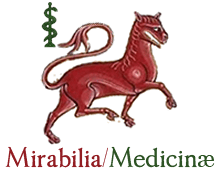Georgia Dunes da Costa MACHADO
Art and Medicine - An Optional Mutual Relationship
Arte y Medicina - Una Relación de Mutualismo Facultativo
Published in Medical Humanities: Art and Life
Keywords: Art, History of Medicine, Interdisciplinarity, Medical Humanities, Transdisciplinarity.
PDF download:
As we evolve scientifically, we move away from the art involved in the intrinsic care of medicine. Many of our doctors are more blind, deaf, less tactile, devoid of empathy, as well as massacred by the high number of care they need to perform and the shameful conditions of work and service to which they are subjected and who are obliged to submit their patients. How can we not distance ourselves from models of behavior like that of William Osler (1849-1919)? This work presents different possibilities of using the arts as an example of a tool for reversing the proven loss of empathy of the medicine students. This through interventions in this process, as well as a reflection about the preconception of the hierarchy of knowledge and the feeling of unpreparedness of the faculty for the basic ability of mediation between art and medical-humanistic contents. It is possible, with the involvement of the emotion, as it happens with the musicians of an orchestra, to govern such mediation of an eye in the good final product: a new or old doctor that disturbs and surprises his patient, being a watershed in life of the individual who puts his full trust in him. In these terms, the use of the arts emerges as an important pedagogical resource, oriented to the rescue of the origins of Medicine, being the technologies and medical science incorporated for the benefit of the patient protagonist in a process of voluntary mutualism between medical art and medical science. This desire sums up in the phrases: “The curricular contents should teach not only the auscultation but the Listening; not only the palpation, but the Comfort to those who suffer; and not only to treat but to broaden the meaning of the act of caring”; “the worst man in science is he who is never an artist, and the worst artist is one who is never a man of science.”






















































































